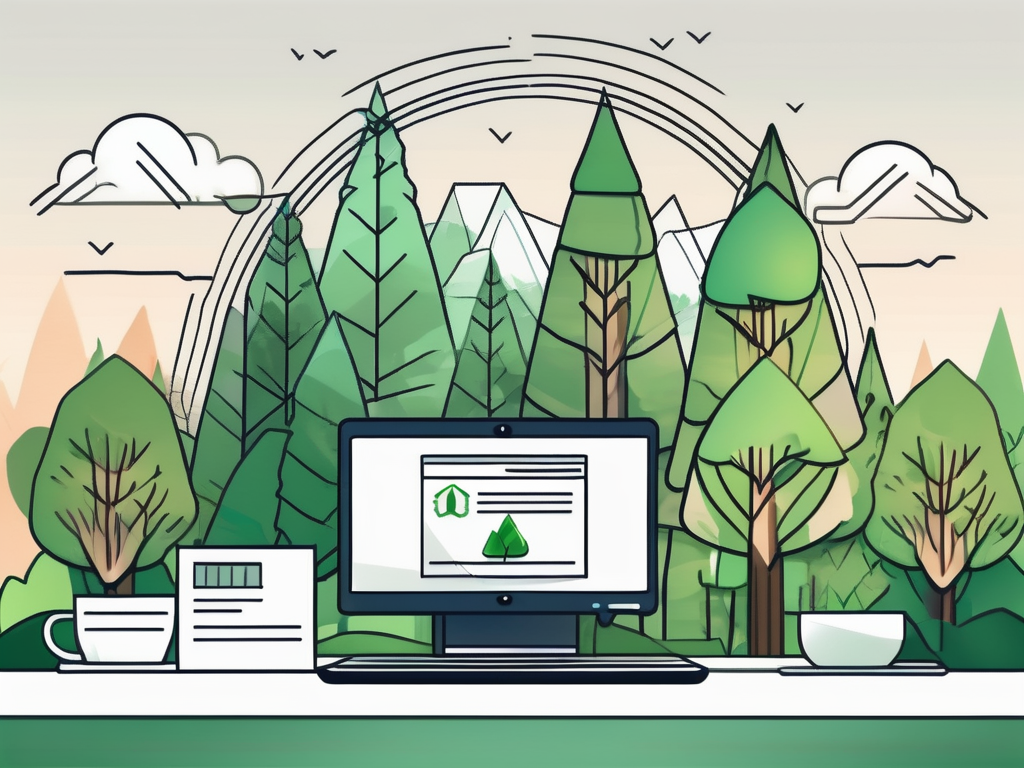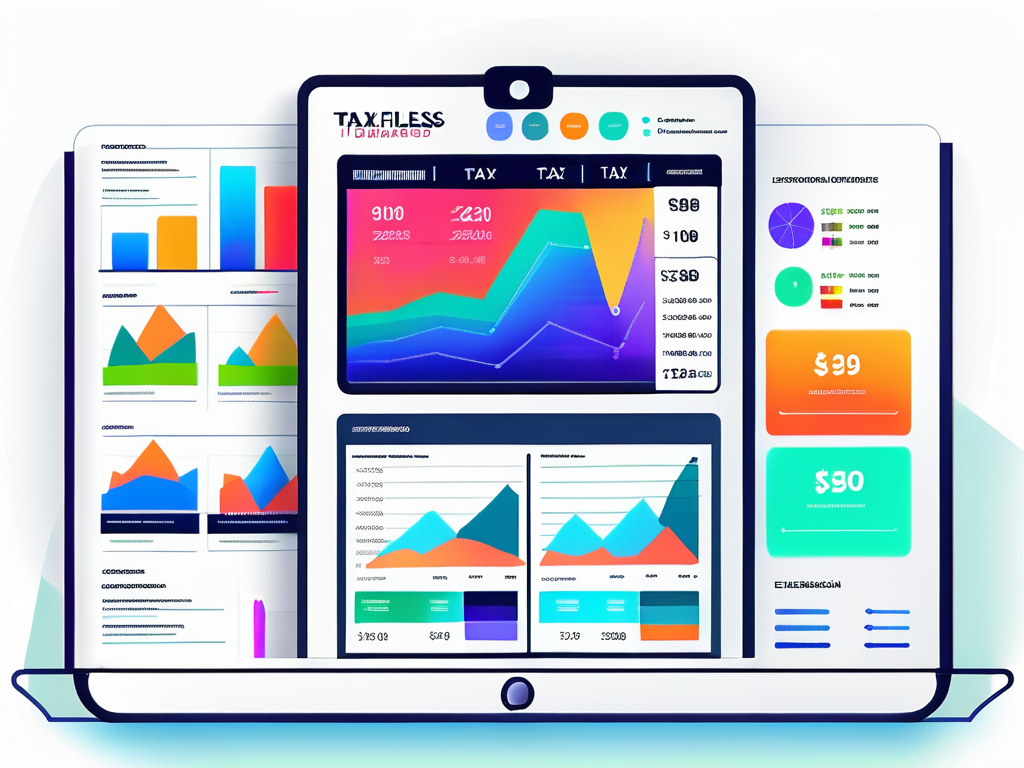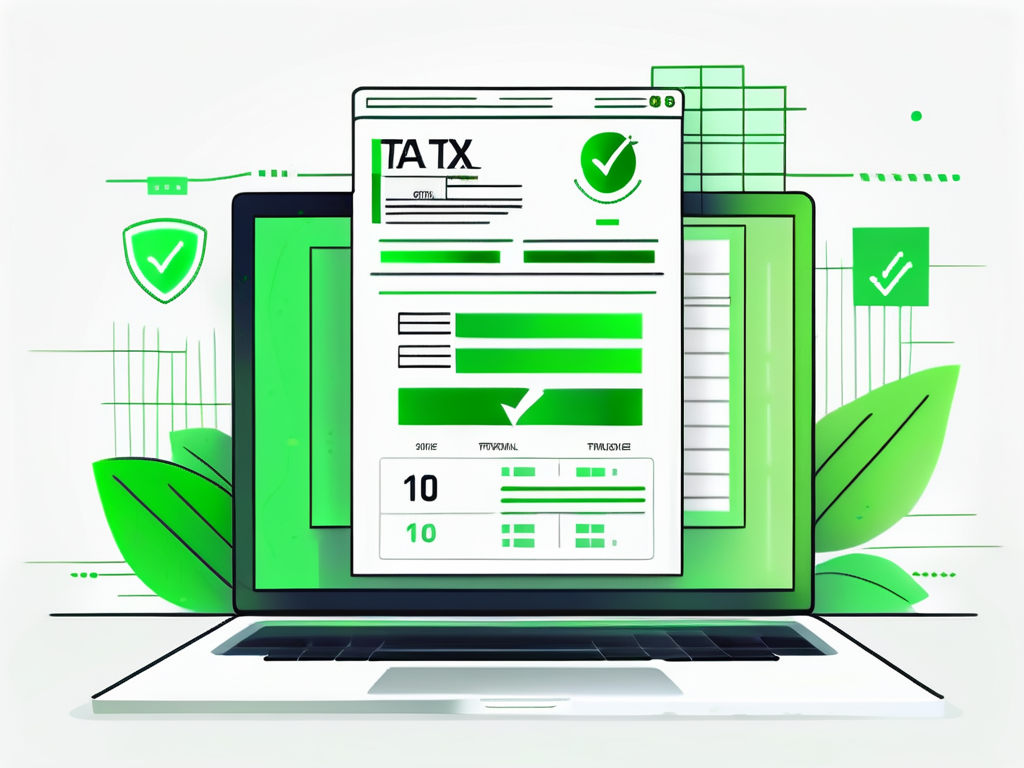Discover the numerous advantages of paperless tax filing and how it can streamline the process, reduce environmental impact, and simplify record-keeping.
rEAD MORE
In today's digital age, paperless tax filing has become an increasingly popular option for individuals and businesses. Not only does it offer convenience and efficiency, but it also provides numerous benefits that can make the tax filing process smoother and more streamlined. For those who are considering making the switch, understanding the many advantages of going paperless is crucial.
Before diving into the benefits, it's important to have a clear understanding of what exactly paperless tax filing entails. Paperless tax filing, also known as e-filing, refers to the electronic submission of tax returns to the relevant tax authorities. This method eliminates the need for physical paperwork, such as printed forms and mailed documents. Instead, taxpayers can file their taxes online through secure platforms provided by tax authorities or authorized third-party services. This shift towards digital filing has revolutionized the way we handle our taxes, offering a range of advantages to both individuals and organizations.

Paperless tax filing involves submitting tax returns electronically, removing the need for traditional paper-based forms. The process typically begins with taxpayers accessing the appropriate online platform, where they enter their financial information and fill out the necessary forms. These platforms often provide step-by-step guidance, ensuring accuracy and completeness. After reviewing and verifying the information, taxpayers can then submit their returns electronically, instantly receiving a confirmation of receipt.
Several key players contribute to the success and efficiency of paperless tax filing. Tax authorities, such as the Internal Revenue Service (IRS) in the United States, play a crucial role in providing secure and user-friendly online platforms for taxpayers to file their returns. These platforms are designed with the latest security measures to protect sensitive financial information. Additionally, authorized third-party service providers offer specialized software and services that simplify the tax filing process. These players collaborate to ensure the smooth transition from paper-based filing to the digital realm, ultimately benefiting taxpayers.
One important aspect of paperless tax filing is the integration of electronic signatures. With the advancement of technology, taxpayers can now sign their tax returns electronically, eliminating the need for physical signatures. This not only saves time but also reduces the chances of errors or missing signatures, ensuring a smoother and more efficient filing process.
Furthermore, the shift towards paperless tax filing has had a positive impact on the environment. By eliminating the need for physical paperwork, millions of trees are saved each year. Additionally, the reduction in transportation and mailing of documents contributes to a decrease in carbon emissions, making paperless tax filing an environmentally friendly choice.
Now that we have established a foundation for understanding paperless tax filing, let's delve into the advantages it has to offer. From time savings to environmental benefits, the decision to go digital can transform the tax filing experience in many ways.
One of the most significant benefits of paperless tax filing is the amount of time it saves. Gone are the days of manually filling out forms, collecting physical receipts, and mailing in documents. With paperless filing, the entire process can be completed online, streamlining the collection and organization of data. Online platforms often provide automated calculations and real-time error checks, reducing the likelihood of mistakes and omissions. This ultimately saves taxpayers valuable time and energy, allowing them to focus on other important aspects of their lives.
Beyond the convenience factor, paperless tax filing holds undeniable environmental advantages. By eliminating the need for paper forms and printed documents, digital filing significantly reduces paper waste. According to a study conducted by the IRS, e-filing resulted in the saving of approximately 1.54 billion pieces of paper in a single tax year. This reduction in paper usage directly translates into reduced deforestation and energy consumption associated with the production and transportation of paper. By embracing paperless tax filing, individuals and businesses can make a positive impact on the environment without compromising on efficiency.
Concerns regarding the security and privacy of personal financial information are always at the forefront when it comes to tax filing. Thankfully, paperless tax filing offers enhanced security measures that protect sensitive data. Online platforms employ advanced encryption technologies to ensure data confidentiality during transmission and storage. Furthermore, the digital nature of electronic filing eliminates the risk of documents being lost or intercepted during mail delivery. With secure platforms and industry-standard security protocols in place, individuals can have peace of mind knowing that their personal information is safe throughout the filing process.
But the advantages of going paperless extend beyond time savings and environmental impact. Another significant benefit is the ease of access to past tax records. With paperless filing, taxpayers can easily retrieve and review their previous tax returns with just a few clicks. This eliminates the need to dig through physical files or rely on memory to recall important financial details. Having instant access to past tax records can be incredibly helpful when applying for loans, mortgages, or even scholarships.
Furthermore, paperless tax filing promotes collaboration and communication between taxpayers and tax professionals. Online platforms often offer features that allow taxpayers to securely share their tax information with their accountants or tax preparers. This streamlines the process of working together and ensures that all parties have access to the necessary documents and information. With real-time collaboration, taxpayers can receive timely advice and guidance, making the tax filing experience more efficient and accurate.
Now that we have explored the benefits of paperless tax filing, you might be wondering how to make the transition. While the process may seem daunting at first, it can be relatively straightforward with the right tools and guidance.

But before we delve into the steps of transitioning to paperless tax filing, let's take a moment to discuss some additional details that can help you navigate this digital landscape with ease.
Before diving into digital tax filing, it's essential to ensure you have the necessary tools and resources at your disposal. This includes a reliable internet connection, a computer or mobile device, and access to a secure online tax filing platform. Many tax authorities provide their own electronic filing platforms that are user-friendly and free to use. However, if you prefer additional assistance or specialized features, authorized third-party service providers also offer software solutions for a fee.
Moreover, it's worth noting that some online platforms offer mobile apps, allowing you to file your taxes on the go. This can be particularly convenient for individuals with busy schedules or those who prefer the flexibility of completing their tax returns from the comfort of their smartphones or tablets.
Making the switch to paperless tax filing can be broken down into a few simple steps. First, gather all your relevant financial documents, such as income statements, expense receipts, and investment information. This step is crucial as having all the necessary paperwork organized and readily available will streamline the filing process.
Next, choose a trusted online platform or authorized software solution to file your taxes. Take the time to research different options and select the one that best suits your needs. Consider factors such as user-friendliness, security features, and customer support.
Once you have chosen your preferred platform, follow the instructions provided to input your financial information and complete the necessary forms. Take advantage of any automated calculations and error checks to ensure accuracy. These built-in features can help minimize the risk of mistakes and save you valuable time.
Finally, before submitting your return electronically, it's always prudent to review your filled-out forms, verify the information, and double-check for any errors or omissions. Once you are confident that everything is accurate, go ahead and submit your return. And remember, it's always a good idea to keep a digital copy of your filed return for your records.
By following these steps and utilizing the right tools, you can seamlessly transition to paperless tax filing and enjoy the benefits it offers. Embracing technology not only simplifies the process but also contributes to a more sustainable and environmentally friendly approach to tax filing.
While paperless tax filing offers numerous advantages, it's important to acknowledge that there may be some challenges along the way. However, with the right information and solutions, these challenges can be easily overcome.
One common concern regarding paperless tax filing is the fear of making mistakes or losing important documents. However, digital platforms often include built-in validation checks that help identify errors before submission. These checks can catch common mistakes such as missing information or mathematical errors, giving you the opportunity to correct them before finalizing your tax return.
Additionally, by embracing digital record-keeping, individuals can safely store important documents electronically, reducing the risk of misplacement or loss. With traditional paper filing, there is always the possibility of documents getting damaged, misplaced, or destroyed. However, with digital storage, you can securely store your tax records and access them whenever you need them, without worrying about physical damage or loss.
It's vital to take advantage of backup options and secure cloud storage to ensure the longevity and accessibility of your digital tax records. Cloud storage provides an extra layer of protection by storing your documents on remote servers, safeguarding them from physical damage or theft. By utilizing these backup options, you can have peace of mind knowing that your tax records are safe and easily retrievable.
Another potential obstacle when transitioning to paperless tax filing is technical difficulties. Not everyone feels comfortable navigating online platforms or using specialized software. However, tax authorities and authorized third-party providers often offer comprehensive tutorials and customer support to assist users.
Taking the time to familiarize oneself with the platform and seeking assistance when needed can help overcome any technical barriers. Many digital tax filing platforms provide step-by-step guides and video tutorials that walk you through the process, making it easier to understand and navigate. Additionally, customer support teams are readily available to answer any questions or troubleshoot any issues you may encounter.
Remember, embracing new technology is a learning process, and with a little patience and practice, you'll soon become adept at navigating the digital tax world. Over time, you'll gain confidence in using online platforms and find that the convenience and efficiency they offer far outweigh any initial technical difficulties you may encounter.
As we gaze into the future, it's evident that paperless tax filing will continue to evolve and shape the way we approach tax preparation and filing. Technological advancements and ongoing improvements in online platforms will further enhance the convenience and efficiency of the process.

Experts predict that the future of tax filing will see an increased integration of artificial intelligence (AI) and machine learning technologies. These innovations will revolutionize the way tax data is collected, organized, and analyzed, further simplifying the filing process for individuals and businesses. Additionally, the use of mobile applications and digital assistants will enable taxpayers to effortlessly manage their tax affairs from the palm of their hand.
Imagine a world where you no longer have to spend hours gathering and organizing your tax documents. With AI-powered tax filing platforms, your financial information will be automatically extracted from various sources, such as your bank statements and receipts, and seamlessly integrated into your tax return. Machine learning algorithms will continuously learn from your financial patterns, making personalized suggestions and maximizing your tax deductions. This level of automation and intelligence will not only save you time but also ensure accuracy in your tax filing.
Technology will play a pivotal role in shaping the future of tax filing. The use of secure blockchain technology holds the potential to create a decentralized and transparent tax system, minimizing the risk of fraudulent activities and enhancing trust between taxpayers and tax authorities. Furthermore, advancements in data analytics will enable tax authorities to better identify tax gaps and streamline auditing processes. These technological advancements will ultimately lead to a more efficient and accurate tax filing experience.
Imagine a tax system where every transaction is recorded on an immutable blockchain ledger, ensuring the integrity and transparency of the entire tax process. Taxpayers will have real-time access to their tax records, eliminating the need for tedious document storage and retrieval. Additionally, tax authorities will be able to leverage advanced data analytics to detect anomalies and potential tax evasion, allowing for more targeted and effective auditing. This level of technological sophistication will not only benefit taxpayers but also ensure a fair and equitable tax system for all.
As we conclude our exploration of the benefits of paperless tax filing, it becomes clear that the advantages are numerous and far-reaching. From saving time to protecting the environment, transitioning to digital tax filing offers numerous benefits to individuals and businesses alike. With the ongoing evolution of technology and tax filing platforms, the future of tax filing holds even greater promise. By embracing the digital realm, we not only simplify our lives but also contribute to a greener and more efficient world.
Copyright © 2025 Vincere Tax| All Rights Reserved
Privacy Policy